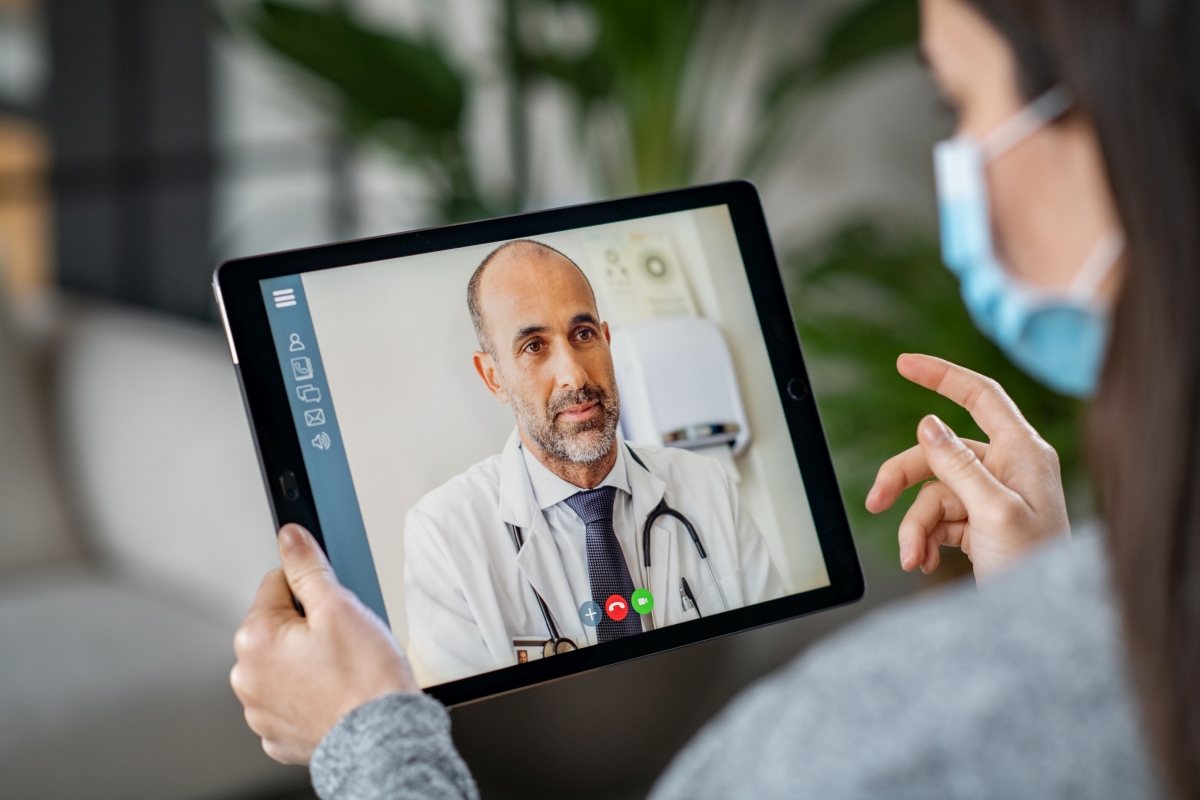Teledoctors: Transforming Access to Healthcare Providers
Wiki Article
Teledoctors: Linking the Void In Between Clients and Doctor
The development of teledoctors represents a substantial change in the health care landscape, providing services to long-standing access concerns dealt with by carriers and individuals alike. By integrating telemedicine into typical methods, healthcare systems can get to remote and underserved populations, providing important medical assessments without the obstacles of range and travel. This paradigm change not only enhances individual involvement however additionally enhances resource allocation for suppliers. Nevertheless, the prevalent fostering of teledoctors increases important concerns about the sustainability of such methods and the implications for future health care delivery. What difficulties exist ahead in guaranteeing this model's efficiency and equity?Increase of Telemedicine

The surge of telemedicine is likewise fueled by the requirement for affordable healthcare. Healthcare systems internationally are under stress to minimize costs while maintaining quality treatment, and telemedicine uses a feasible solution. By minimizing the need for physical brows through, telemedicine lowers above costs for healthcare centers and eventually decreases the economic problem on clients.
Additionally, the COVID-19 pandemic worked as a driver, accelerating the fostering of telemedicine practices. Social distancing measures and the demand to lessen exposure danger necessitated a change towards remote consultations, motivating governing bodies to sustain and adjust telehealth services. This change has not just tested telemedicine's efficiency but additionally its prospective to evolve as a staple element of modern health care systems.
Benefits for Individuals
Largely, telemedicine boosts accessibility, allowing clients in remote or underserved locations to seek advice from medical care providers without the need for extensive travel. Telemedicine also offers clients the benefit of getting medical guidance and treatment from the comfort of their homes, reducing the time and cost linked with taking a trip to a medical care center.Additionally, telemedicine sustains continuity of care by assisting in routine follow-ups and monitoring, which are essential for managing persistent problems. Individuals can conveniently set up consultations and gain access to health care services outside typical workplace hours, fitting their busy lifestyles. This adaptability brings about enhanced client engagement and adherence to therapy plans, potentially causing much better health outcomes.
In addition, telemedicine can assist mitigate the threat of infection transmission, a worry heightened by the COVID-19 pandemic. By decreasing the requirement for in-person gos to, patients can prevent crowded waiting areas and decrease direct exposure to infectious illnesses. Inevitably, telemedicine empowers people by supplying prompt, effective, and personalized health care solutions.
Advantages for Providers
For doctor, telemedicine supplies substantial advantages that boost the efficiency and reach of their technique. By leveraging digital innovation, providers can prolong their solutions to a broader market, consisting of those in remote or underserved areas. This not just reduces geographical obstacles yet also enhances person retention and procurement by making health care much more obtainable.With telemedicine, the need for physical room decreases, allowing suppliers to conserve on actual estate and functional expenditures. This adaptability can lead to boosted patient consultations per day, thus improving profits potential.
Telemedicine also promotes a much more collaborative atmosphere for doctor. teledoctors. It makes it possible for seamless sharing of individual visit the site information amongst professionals, boosting diagnostic accuracy and therapy end results. Furthermore, digital systems can integrate with digital health records (EHRs), boosting data precision and streamlining management tasks
Furthermore, telemedicine boosts client complete satisfaction, which is critical for company track record and success. description By using timely and practical care, providers can improve person commitment and interaction, even more enhancing the provider-patient partnership.
Overcoming Difficulties
While telemedicine provides countless advantages for healthcare providers, it likewise presents obstacles that require mindful factor to consider. Medical care suppliers should stick to rigid guidelines like HIPAA to safeguard sensitive info, consequently needing financial investment in secure systems and recurring personnel training. teledoctors.Another obstacle is the electronic divide, which can hinder access to telemedicine services. Not all people have equivalent access to the needed innovation or net connectivity, especially those in underserved or rural areas. This difference can aggravate existing health care inequalities, making it essential for providers to check out different solutions, such as partnerships with neighborhood organizations, to connect this space.
Additionally, there are constraints in conducting physical exams remotely. Specific problems call for in-person evaluation, highlighting the need for a hybrid version that integrates telemedicine with conventional sees. When telemedicine is ideal and ensuring smooth shifts between virtual and in-person treatment., service providers should navigate these challenges by developing procedures to determine.
Future of Medical Care
The future of health care is poised for a transformative advancement, driven by the rapid assimilation of innovation and development. Central to this change is the surge of telemedicine, which is redefining exactly how medical services are accessed and delivered. With improvements in digital interaction, telehealth systems are becoming extra advanced, supplying real-time examinations, remote patient surveillance, and customized care plans. This not only improves person comfort however also increases accessibility to medical care, particularly in underserved and country areas.Expert system (AI) and artificial intelligence are additionally established to play pivotal functions. These technologies can analyze large amounts of data, providing anticipating insights right into individual health, boosting diagnostic precision, and individualizing treatment plans. AI-driven tools can boost doctor' capacities, resulting in more enlightened decision-making and far better individual outcomes.
In addition, wearable innovation and Net of Medical Things (IoMT) devices are changing patient engagement and aggressive health management. These devices allow constant wellness tracking, enabling very early detection of prompt interventions and potential issues.
As these modern technologies continue to development, they assure to develop an extra effective, accessible, and patient-centric healthcare system, inevitably bridging the void between patients and healthcare companies. - teledoctors
Verdict
Teledoctors are transforming healthcare by significantly enhancing ease of access and performance with remote consultations. This development supports patients in underserved locations by providing prompt clinical suggestions without needing physical gos to, therefore improving client interaction and continuity of treatment. Medical care carriers take advantage of more reliable time monitoring and improved partnership opportunities. Despite challenges such as regulative issues and technical barriers, the future of health care shows up reliable and increasingly comprehensive due to the combination of telemedicine right into standard care designs.
As telemedicine continues to improve healthcare shipment, people stand to acquire dramatically from this change. Mostly, telemedicine boosts access, allowing individuals in underserved or remote areas to seek advice from medical care companies without the demand for extensive travel. Telemedicine likewise supplies individuals the ease of receiving medical recommendations and therapy from the convenience of their homes, reducing the time and cost connected with taking a trip to a medical care center.
Ultimately, telemedicine empowers clients by offering prompt, effective, and individualized medical care solutions.
Report this wiki page